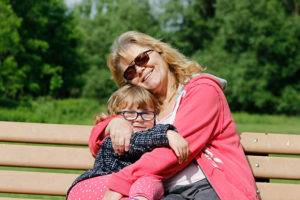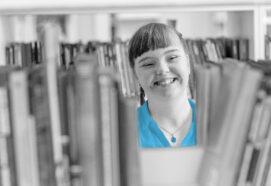By Mary Busk, Family Carer Adviser, NHS England & Sue North, National Children and Young People’s Lead
Mary is a Family Carer Advisers in the Improving Health and Quality Team, part of the Learning Disability Programme for NHS England. Mary is also involved with the CYP part of the Transforming Care programme. Mary previously co-founded the National Network of Parent Carer Forums and was the Steering Group member for London.
Sue North is the National Children and Young People’s lead in the Transforming Care Programme, part of the Learning Disability Directorate at NHS England and has 24 years of experience working with disabled children, young people and their families in a range of social care, education and health settings.
It is a good time to reflect on the importance of identifying an Intellectual Disability or a Learning Disability given Dr Mark Lovell’s IDIDA2H new framework. Although it is sometimes suggested that services and support should be available without a diagnosis, it remains the case that understanding needs fully is important to meeting them and planning for the future for the child, young person and family. This enables good commissioning as well as giving legal protections under the Equality Act.

The importance of early identification and early intervention
The principles underpinning Transforming Care for children and young people reflects this early identification and early intervention approach. For example the Developing and Support and Services National Guidance[1] states:
“2.1 Children with a learning disability, autism or both should be identified at the first opportunity. Local authorities are required by law to identify children and young people who have or may have special educational needs and who have a disability, and when a clinical commissioning group, NHS trust or NHS foundation suspect that a pre-school child has (or probably has) special educational needs or a disability, they have a responsibility to discuss this with the parents and in turn inform the appropriate local authority. Staff working across health, education and social care (but particularly Health Visitors and School Nurses) should have the skills and knowledge to identify the signs and symptoms of learning disability and autism. Transforming Care Partnerships (TCPs) should ensure that the Healthy Child Pathway plays a key role in early identification of children with a learning disability, autism or both.
2.2 When a learning disability or autism is first suspected children, young people and their families should have access to timely assessment and/or diagnosis. There should be clear local assessment pathways; timescales for autism assessment should be in line with NICE guidance and formal assessments for learning disability should follow a similar process. Practical support should not be dependent on diagnosis and should be offered alongside assessment processes.”
This National Guidance also makes clear that the workforce should have the necessary skills to identify needs and local areas should have in place the necessary assessment pathways and processes, informed by national best practice to support this. The Children and Families Act 2014 reflects these same ambitions and seeks to ensure that children, young people and their families are at the heart of decisions about their journey and “being provided with the information and support necessary to enable participation in those decisions…in order to facilitate the development of the child or young person and to help him or her achieve the best possible educational and other outcomes”[2].

Addressing health inequalities
It will be really important that local areas understand the changes to the diagnostic process for Intellectual Disability/Learning Disability and have the right workforce with the right skills to ensure that the new requirements can be met and needs are identified early. It is vital that health inequalities, identified through the Learning Disabilities Mortality Review (LeDeR)[3] and in other research are addressed. NHS England leads a large programme of work to seek to help tackle these health inequalities[4]. This will include local areas knowing and making the right reasonable adjustments as required by the Equality Act 2010, Accessible Information Standards and other laws and policies, including relating to complaints. Recent work led by NHS England called Ask Listen Do has found that people with a learning disability and their families do not always feel listened to and can be afraid to raise concerns[5].
The family journey
Practically, children may not realise they are being taken by their parent/carers for assessments for potential “diagnoses” to Child Development Centres or other locations when they are young. That journey rests with the parent/carer in the expectation that by identifying needs, there will be more understanding and support and services to meet needs, including from Allied Health Professionals. Many (although not all) parent/carers know instinctively that early intervention is essential to develop and maintain skills especially in the area of Learning Disability/Intellectual Disability. Families should not have to fight for services for their children and young people with an Intellectual Disability/Learning Disability. Ensuring there is appropriate support post-diagnosis is also essential to help parent carers navigate through the emotional and practical challenges they may face.
Parent carers are also very conscious, as the Children and Families Act requires, of the need to be aspirational for their children and young people with disabilities. That includes being able to do the same things as other children and young people, having friends, being visible in their communities and getting a job. There can be a worry that labels such as ‘severe Intellectual Disability/Learning Disability’ might imply the child or young person does not have much potential or might not merit interventions. That is not the case as all young people can make a valid contribution and have positive and successful lives as part of their communities. It is essential that all in the workforce know and understand this vision and are very aspirational from the earliest stages to ensure and enable this for individual children and young people.
Children and young people with an Intellectual Disability/Learning Disability may have additional co-morbid disabilities such as autism and other needs. In order to inform needs based commissioning, NHS Digital has mandated data collection for children and young people including diagnoses and long term conditions.[6] Work is continuing to support implementation of this dataset through the SEND Complex Needs Board chaired by NHS England[7].
Transition can be a particularly challenging time for young people and for families. Before the Children and Families Act and Care Act 2014, IQ could be used as a measure of accessing adult social care. If diagnoses were not complete, families and young people could struggle to get the right support. The Children and Families Act now covers the ages 0-25 which focuses on aspirational outcomes for adulthood and remove this cliff edge in services. That includes a renewed focus on employment for all. NHS England employs people with a learning disability and autism, like Carl Shaw, who lead on national programmes of work[8].
Understanding the use of language across health, education and social care
Work in the Transforming Care Steering Group for children and young people[9] led by Jane Ramsey, an independent Chair, identified a practical barrier to understanding needs across education, health and social care through a different use of language in education, health and social care. While health uses the term Intellectual Disability/Learning Disability, education uses the term Learning Difficulty and social care may refer to ‘children in need’ or disabilities.
A lot of work has been done within the Group and across Government Departments to understand this use of language better and to use that to inform the needs of different groups of children and young people including those with very complex needs. This work has led to the production of a diagram (Definitions of learning disability) that shows the language and population information. It is really important that this is understood by commissioners and by practitioners in local areas.

The use of language
While we recognise that the two major international classification systems have chosen to use the term Intellectual Disability, families or people do not necessarily see this as a positive step. That is why they prefer the term Learning Disability. People and their families do not want to feel that they cannot be fully members of society and to have the same life chances and life expectancy as everyone else. It would be a positive step if, in future, these international bodies took account of the wishes and feelings of people and their families before making decisions on such important issues in the spirit of co-production.
[1] https://www.england.nhs.uk/publication/developing-support-and-services-for-children-and-young-people-with-a-learning-disability-autism-or-both/
[2] Section 19 Children and Families Act 2014
[3] https://www.england.nhs.uk/wp-content/uploads/2017/04/LeDeR-prog-secondary-briefing.pdf
[4] https://www.england.nhs.uk/learning-disabilities/improving-health/
[5] https://www.england.nhs.uk/learning-disabilities/about/ask-listen-do/
[6] https://digital.nhs.uk/data-and-information/data-collections-and-data-sets/data-sets/children-and-young-people-s-health-services-data-set
[7] https://www.england.nhs.uk/learning-disabilities/care/children-young-people/send/
[8] https://www.england.nhs.uk/author/carl-shaw/
[9] https://www.england.nhs.uk/learning-disabilities/care/children-young-people/
This is an independent article and the views are not necessarily those of ACAMH.


